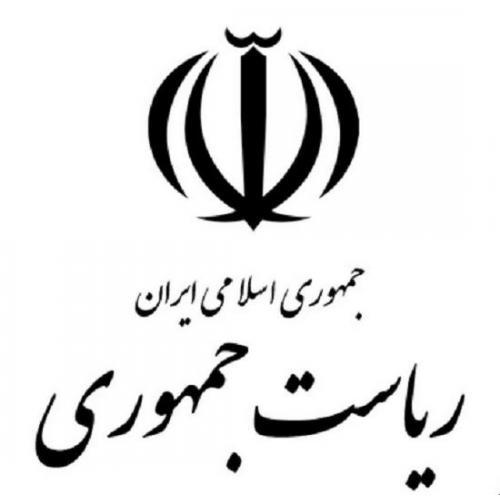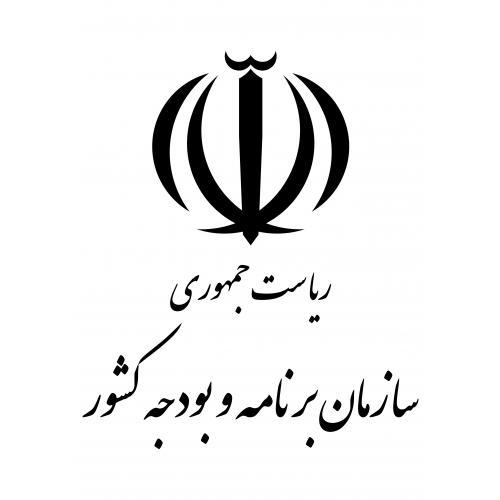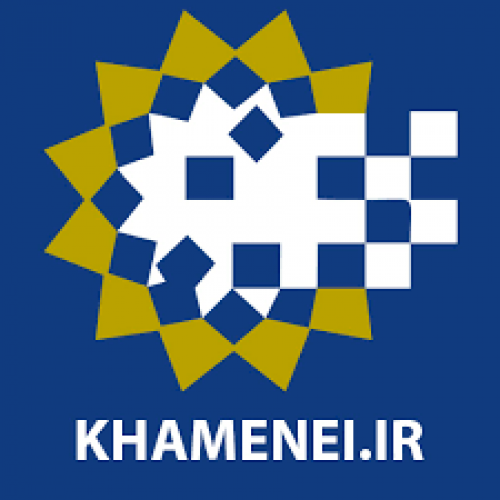
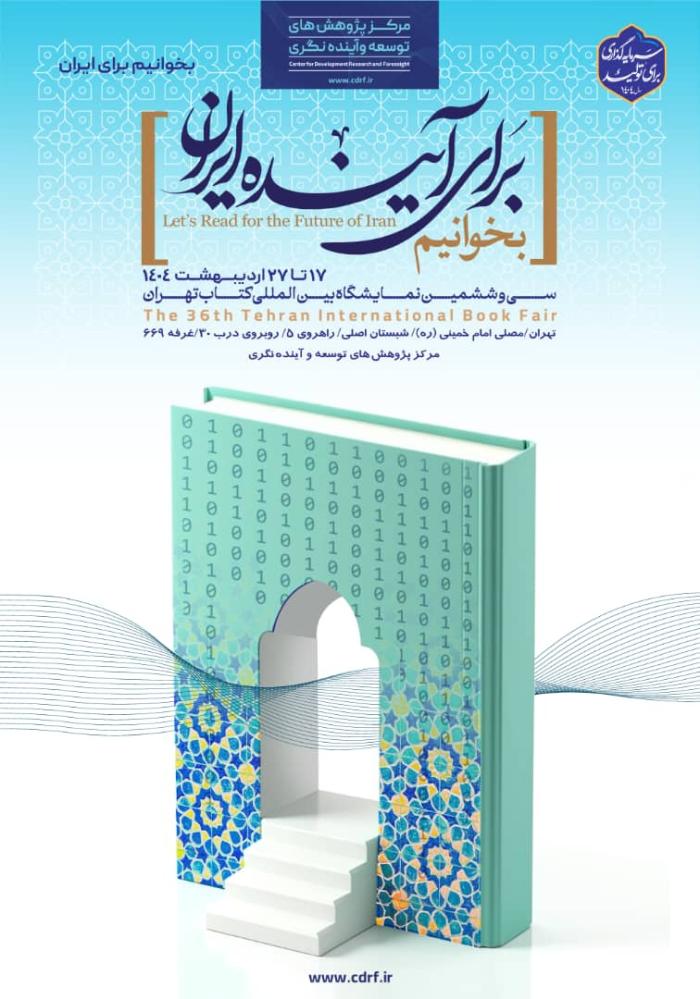
-
بررسی آییننامهها و دستورالعملهای برنامه هفتم پیشرفت
-
بررسی عوامل موثر بر افزایش تصادفات و تلفات جادهای و سوانح رانندگی و دادهکاوی تلفات انسانی
-
سازماندهی و بازآرایی فضایی آموزش عالی کشور
-
به روز رسانی سند ملی آمایش سرزمین
-
انجام مطالعات مناطق آزاد به عنوان نواحی پیشران اقتصادی کشور
-
اصلاح ساختار بودجه و پیاده سازی نظام یکپارچه مدیریت اطلاعات مالی دولت (IFMIS)
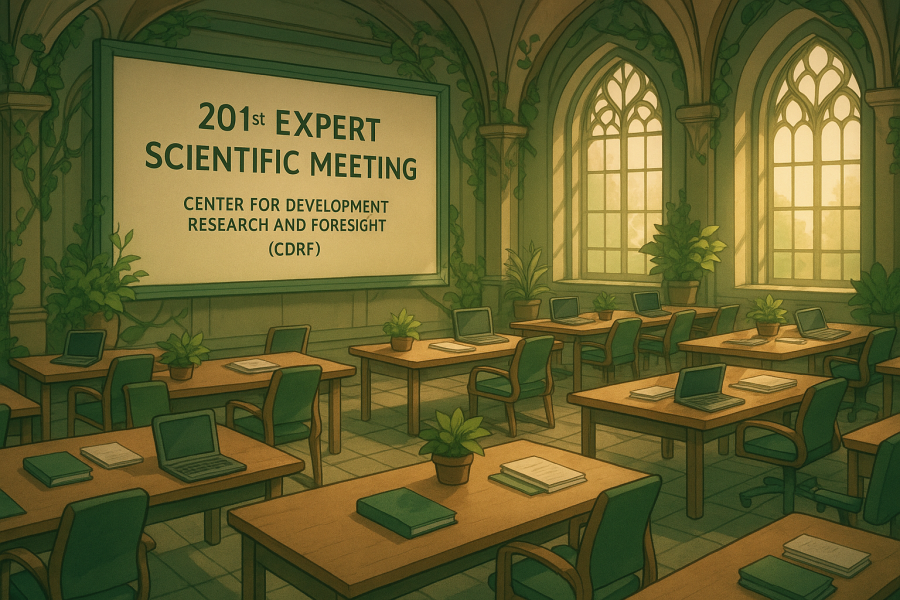
In this meeting, Ali Agha-Mohammadi, Head of the Economic Group of the Office of the Supreme Leader and non-ex officio member of the Expediency Discernment Council of the System, served as the scientific chair of the meeting. Additionally, Afshin Kasalai, Head of Development Policy and Partnerships of the Plan and Budget Organization of the Islamic Republic of Iran (PBO), and Hossein Arami, former Head of Territorial Planning of the PBO and Secretary of the Territorial Planning Think Tank of the Center for Islamic-Iranian Model of Progress, participated as keynote speakers, presenting their viewpoints.
At the beginning of the meeting, Mehdi Razpour, Head of the Education Group of the CDRF and the secretary of the meeting, stated that the Vision of the Islamic Republic of Iran in the Horizon of 1404 AH is a high-level strategic document outlining the civil macro-level objectives over a 20-year horizon (2005–2026). This document envisions Iran as a developed nation with the leading position in economic, scientific, and technological fields within the region. However, the path toward achieving these goals has encountered several challenges and adverse factors.
He continued by stating that economic and political sanctions have been among the key factors adversely affecting the implementation of the Vision Document, resulting in constraints on trade exchanges and limited access to advanced technologies. Severe economic fluctuations have further complicated the planning and execution of macro-level policies. Indicators such as economic growth, employment rate, income inequality, culture, and education still demonstrate a significant gap from the targets outlined in the Vision Document.
Razpour highlighted several key challenges currently facing the country, including policy and administrative instability, particularly following changes in government; structural weaknesses in the national economy; excessive reliance on oil revenues and lack of economic diversification; a fragile private sector; insufficient transparency and accountability in the performance of executive institutions; and irregular reporting on program progress. He also pointed to major environmental challenges such as water scarcity, air pollution, and degradation of natural resources. Demographic shifts, including declining fertility rates and a growing elderly population; the rapid evolution of emerging technologies such as artificial intelligence and the Internet of Things, which demand swift policy adaptation; and persistent regional disparities in development and poverty levels across the country, were also cited as critical issues requiring urgent attention.
The Head of the Education Group of the CDRF added: This raises a critical question—were the goals set forth in the Vision of the Islamic Republic of Iran in the Horizon of 1404 AH inherently unattainable? Was the Document itself fundamentally misaligned with Iran’s realities, or did the implementation processes fail to proceed as planned? Alternatively, did unforeseen challenges and adverse factors divert the Vision from its intended course? A precise assessment and diagnostic analysis of these questions can provide a solid foundation for the optimal formulation of Iran’s future development vision.
As the meeting proceeded, Afshin Kasalai, Head of Development Policy and Partnerships of the PBO, addressed the question of why Iran requires a national vision document. He stated that nations need a vision to guide their trajectory of development and progress into the future. In essence, formulating a national vision is essential for defining long-term goals, reducing the risks associated with reactive policymaking, anticipating and leading future transformations, creating strategic plans that are better aligned with future uncertainties, and enhancing resilience in the face of unforeseen crises and challenges.
He added that the objective of formulating a national vision is to enable states to attain appropriate levels of development, characterized by active public participation and constructive international engagement.
The Head of Development Policy and Partnerships of the PBO further defined the Vision of the Islamic Republic of Iran in the Horizon of 1404 AH as a high-level and strategic document formulated and issued in 2004 by the Expediency Discernment Council of the System. The primary objective of the document was to outline Iran’s development and progress trajectory over a 20-year period (2005–2026). The document defines Iran as a developed country with the leading position in economic, scientific, and technological domains within the Southwest Asian region (including Central Asia, the Caucasus, the Middle East, and neighboring countries). It is grounded in Islamic, national, and revolutionary values. Core principles such as justice, freedom, democracy, environmental sustainability, and constructive engagement with the world constitute the foundational pillars of this document.
Speaking on the goals, strategies, and indicators outlined in the Vision of the Islamic Republic of Iran in the Horizon of 1404 AH, Afshin Kasalaei stated that the document defines broad national objectives across various domains, including economic, social, cultural, scientific and technological, political, and security spheres. These goals establish the overall direction for Iran’s development. To achieve these overarching aims, the document sets forth key strategic approaches, which serve as the fundamental frameworks for policymaking and planning at multiple levels. Additionally, the document identifies core performance indicators to assess progress toward realizing its objectives. These indicators function as tools to measure the effectiveness and success of programs and policies.
This policy expert identified several key characteristics of the Vision of the Islamic Republic of Iran in the Horizon of 1404 AH, including its long-term and strategic nature, comprehensiveness and integration, value-based and aspirational orientation, emphasis on constructive engagement with the international community, and focus on balanced and sustainable development.
Referring to the opportunities and challenges of the Vision of the Islamic Republic of Iran in the Horizon of 1404 AH, he highlighted several opportunities, including Iran’s geopolitical position at the relative center of three continents—Africa, Europe, and Asia; its significant role in the energy sector; abundant mineral resources; a youthful population; and high human resource potential. Among the challenges and dichotomies outlined were the dignified survival or the weakening and overthrow of the Islamic Republic of Iran; Iran’s development or underdevelopment; the Islamic awakening of Muslims worldwide or its distortion by regressive radical movements; acceptance of a new American hegemony globally and regionally or acceptance of Islamic convergence in the region; Iran’s engagement with the globalization process and project; and the continuation or cessation of the Islamic Revolution based on the ideology of Imam Khomeini (may his soul rest in peace).
The Head of Development Policy and Partnerships of the PBO stated regarding the economic indicators during the implementation period of the Vision of the Islamic Republic of Iran in the Horizon of 1404 AH that, after reviewing these indicators, it can be concluded that the achievements and performance fall short of the goals set forth in the document. In some cases, the gap between Iran and the nations within the regional scope of the document has even widened. An analysis of various indicators—including economic growth rate, inflation rate, regional economic strength, economic freedom, and business environment indices—demonstrates a failure to achieve the document’s emphasized objectives of sustainable, rapid economic growth accompanied by full employment and social justice.
He continued by noting that the path toward a competitive economy has been influenced more significantly by external factors—such as international sanctions, currency restrictions, and the impact of oil revenues on various layers of Iran’s economy, as well as the prevalence of vulnerabilities within the business environment—than by internal drivers. Meanwhile, most nations in the region have designed their national vision document by pursuing economic deepening through endogenous factors, such as capital accumulation, technological development, and integration with the global economy, thereby successfully elevating their regional standing. Iran’s current situation has not only hindered the realization of sustainable and high economic growth but has also rendered the Iranian economy vulnerable to both internal and external shocks.
In outlining policy recommendations, Afshin Kasalaei emphasized several key points including: focusing on Iran’s vulnerable areas; building institutions and formulating laws and regulations to establish economic stability; prioritizing growth drivers, particularly total factor productivity; and utilizing Iran’s existing economic capacity to sustain higher and more sustainable economic growth. He also highlighted the implementation of a system to enhance the efficiency of investment resources for increased economic growth; facilitating technology transfer and developing human capital through reforms in educational, research, and technological structures; revising Iran’s economic and commercial positioning at regional and international levels; and making more effective use of these capacities to enhance the degree of economic and commercial integration within the Southwest Asia region.
As the meeting proceeded, Hossein Arami, the former Head of Territorial Planning of the PBO and Secretary of the Territorial Planning Think Tank of the Center for Islamic-Iranian Model of Progress, spoke as another keynote speaker regarding the critical assessment of the drafting process of the Vision of the Islamic Republic of Iran in the Horizon of 1404 AH. He stated that there is a prevailing belief among some experts that the development of the document did not optimally utilize the existing expert knowledge within Iran. While the document’s designers regard it as the second national document after the Constitution, it would have been preferable to incorporate insights from a broader range of experts—beyond just triple powers and some members of the Expediency Discernment Council of the System and its relevant commission. Therefore, it can be argued that the Expediency Discernment Council of the System did not fully leverage the intellectual capacities available within the country during the formulation of this document.
He continued: Another shortcoming of the Vision of the Islamic Republic of Iran in the Horizon of 1404 AH lies in its generalizations, whereby the orientations and strategies related to economic, industrial, civilizational, and cultural sectors are not clearly defined. It remains unclear what Iran’s economic model will be, or what the future of the insurance and banking industries will look like. What will be the hierarchical positioning of industry, agriculture, and emerging technologies relative to each other? What will be the future of the critical issue of economic self-sufficiency—particularly in strategic products? What will be the extent of reliance on oil exports and the volume of extraction? Will Iran’s economy will remain dependent on a single product or whether industrial and agricultural exports will surpass oil exports over the next twenty years?
The former Head of Territorial Planning of the PBO further diagnosed the shortcomings of the Vision of the Islamic Republic of Iran in the Horizon of 1404 AH in the area of formulation and dissemination processes, stating: “What has been notably absent in Iran’s preparation of the Vision of the Islamic Republic of Iran in the Horizon of 1404 AH is a genuine dialogue aimed at development. Unfortunately, over the past fifty years, there has been a significant gap in this regard. This gap can be observed both horizontally and vertically across various dimensions. There has been no sustained conversation among intellectuals or thought leaders at any period. Effective organizational execution, division of labor, and the formation of discourse are all grounded in shared conceptual frameworks. When there is no clear and coherent understanding of these concepts, it is naturally impossible to expect the emergence of executive systems aligned with them. The most crucial venues for such conversation and dialogue should be the media, universities, and, potentially, civil society institutions.”
He further addressed the challenges in the implementation process of the Vision of the Islamic Republic of Iran in the Horizon of 1404 AH, stating: Since the document aims to outline an idealized atmosphere, transforming it into a comprehensive practice and a set of mutual expectations between the government and the people requires a series of stages that ultimately culminate in the design of a concrete roadmap. In fact, different governments impose their views through annual budgets, government resolutions, and domestic and foreign political actions as influenced by political preferences and the dispositions of their presidents. As noted in foresight literature, in addition to long-term trends, discrete events also significantly shape the future. Events such as economic sanctions, climate change, war conditions, civil unrest, and others cause shifts in priorities, bringing immediate issues to the forefront while strategic matters recede into the background.
Secretary of the Territorial Planning Think Tank of the Center for Islamic-Iranian Model of Progress, continued with policy recommendations and emphasized the importance of adopting an inclusive approach that engages various layers of society and maximizes the utilization of Iran’s expert and intellectual capacities. He highlighted the need to incorporate foresight knowledge and methodologies, avoid vague generalities, and rely on measurable and verifiable statements. Attention to justice in all its dimensions was stressed, cautioning against focusing solely on social justice. Furthermore, he underscored the significance of politically sensitive components such as a peaceful nuclear policy, information technology, and resilience. Additional recommendations included reducing regional and social inequalities, expanding cultural influence, adopting a strategic and prudent approach in regional interactions, transforming the education system into one that fosters creativity, innovation, and entrepreneurship, and striving to attain a position as a producer of scientific knowledge, innovation, and scholarly authority.
Later in the meeting, Ali AghaMohammadi, Head of the Economic Group of the Office of the Supreme Leader and non-ex officio member of the Expediency Discernment Council of the System, serving as the scientific chair of the meeting, summarized the discussion by stating: “Recent developments, including the shift in U.S. policy regarding the Ukraine issue and unprecedented events between the United States and Europe, have prompted many nations to pursue improved national visions. These efforts, in turn, urge us to align our own vision for the future with those of other nations. We must not overlook the visions of countries such as China simply because of our existing aid and interactions with them; rather, by understanding the visions of other states, we should strive to formulate an appropriate and competitive vision for our own nation.”
He continued by stating: “The significant and weighty responsibility currently resting on our shoulders is the issue of 'consensus.' We must clearly and explicitly emphasize that what we mean by this crucial and necessary matter is the 'building of consensus among the intellectual elites'—those who strive to advance a better vision for the future of our country.”
Ali Agha-Mohammadi added: “To improve Iran’s situation, our administrative structure must be completely overhauled. The mistake we made in governance was that, albeit unintentionally, we essentially continued the same monarchical structure—with the only difference being our intention to establish a popular government—which ultimately did not succeed. Therefore, we must reform the administrative system and fundamentally change the nature of Iran’s structure. We need to clearly redefine the relationship between ruler and ruled for the people and transform the dynamic between the government and its citizens.”
The non-ex officio member of the Expediency Discernment Council of the System explained: “Regarding Article 44 of the Constitution, the Supreme Leader, Ayatollah Khamenei, stated that if the government adopts a policy that benefits economic stakeholders but harms the people, the people must come forward to demand accountability, as the government is not absolute and cannot act arbitrarily. If we carefully consider the Supreme Leader’s statements, we realize that all his remarks are fully in accordance with the Constitution.”
In the proceedings of the meeting, the experts and specialists expressed their viewpoints and posed their questions.
It is noteworthy that this meeting was held on March 4, 2025, both in-person and virtually, with the participation of national and provincial executive agencies, universities, research centers, and think tanks, at the Hossein Azimi Hall located in the CDRF.

